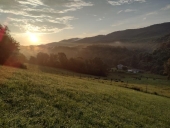
 10
10




 9
9




Fish heads fish heads roly poly fish heads
 7
7




 8
8




 2
2




Trish Doherty wrote:Cristo, I'll have to learn more about discing. I don't know much about it. Any good resources you would recommend?
 10
10




Trish Doherty wrote:I really wonder if the smoke situation is going to be a deal-breaker for me in the long term because I'm very sensitive to it. But then, with wildfires getting worse and carrying smoke long distances, who knows where there will be good air? It seems there's little to do, short of building a biodome. I had hoped maybe there could be some trick to it... like enough forestation might catch some of the particles, or selecting a site with particular topography might mean that prevailing winds carry up and over.
 11
11




Visit Redhawk's soil series: https://permies.com/wiki/redhawk-soil
How permies.com works: https://permies.com/wiki/34193/permies-works-links-threads
 8
8




Moderator, Treatment Free Beekeepers group on Facebook.
https://www.facebook.com/groups/treatmentfreebeekeepers/





 11
11




Nothing ruins a neighborhood like paved roads and water lines.
 5
5




Invasive plants are Earth's way of insisting we notice her medicines. Stephen Herrod Buhner
Everyone learns what works by learning what doesn't work. Stephen Herrod Buhner
 9
9




 8
8




Fish heads fish heads roly poly fish heads
 7
7




 6
6




This is all just my opinion based on a flawed memory

 7
7




 6
6




 6
6




Lif Strand
New Mexico USA
 7
7




 6
6




Once you make a decision, the universe conspires to make it happen. - Ralph Waldo Emerson
 7
7




I was thinking about making a custom implement for my tractor - a water tank wit attached sprinklers (with simple valve) and small 12V pump with a short hose. It would allow to address fire spots that are numerous and small but too far to run to them with buckets of water - usually in 100 F heat + fire heat plus smoke.
Argue for your limitations and they are yours forever.




Timothy Gift wrote:One other resource that might be helpful after you have a property is the Natural Resources Conservation Service or NRCS.
Lif Strand
New Mexico USA
 4
4




Mediterranean climate, hugel trenches, fabulous clay soil high in nutrients, self-watering containers with hugel layers, keyhole composting with low hugel raised beds, thick Back to Eden Wood chips mulch (distinguished from Bark chips), using as many native plants as possible....all drought tolerant.
 2
2




 2
2




Lif Strand
New Mexico USA
 2
2




This issue is that plants can't do enough in a heavy, week-long smoke situation. If your location is prone to that, I would buy a hepa filter. For mild smoke situations lasting a day or two, plants are definitely a help - they've been shown to help with air quality in cities for example.Lif Strand wrote:Just came across this about https://www.ourhouseplants.com/guides/50-plants-that-clean-the-air
Also check out another permie forum talking about the issue https://permies.com/t/163811/permaculture-house-plants/houseplants-clean-wildfire-smoke
Visit Redhawk's soil series: https://permies.com/wiki/redhawk-soil
How permies.com works: https://permies.com/wiki/34193/permies-works-links-threads
 3
3




Jay Angler wrote:
This issue is that plants can't do enough in a heavy, week-long smoke situation. If your location is prone to that, I would buy a hepa filter. For mild smoke situations lasting a day or two, plants are definitely a help - they've been shown to help with air quality in cities for example.Lif Strand wrote:Just came across this about https://www.ourhouseplants.com/guides/50-plants-that-clean-the-air
Also check out another permie forum talking about the issue https://permies.com/t/163811/permaculture-house-plants/houseplants-clean-wildfire-smoke
Lif Strand
New Mexico USA
 3
3




The inspiration for all innovation can be traced back to the land/nature.
 2
2




Lif Strand wrote:I agree, but I'm on solar. During heavy smoke my power system is already compromised so no air filtering for me!
Visit Redhawk's soil series: https://permies.com/wiki/redhawk-soil
How permies.com works: https://permies.com/wiki/34193/permies-works-links-threads

|
this llama doesn't want your drama, he just wants this tiny ad for his mama
Learn Permaculture through a little hard work
https://wheaton-labs.com/bootcamp
|



